Internal evidence
The internal evidence may be briefly summarized as follows:
- The author of Acts was a companion of Saint Paul, namely, Saint Luke; and
- the author of Acts was the author of the Gospel.
The arguments are given at length by Plummer, “St. Luke” in “Int. Crit. Com.” (4th ed., Edinburgh, 1901); Harnack, “Luke the Physician” (London, 1907); “The Acts of the Apostles” (London, 1909); etc.
The Author of Acts was a companion of Saint Paul, namely, Saint Luke
There is nothing more certain in Biblical criticism than this proposition. The writer of the “we” sections claims to be a companion of St. Paul. The “we” begins at Acts 16:10, and continues to 16:17 (theaction is at Philippi). It reappears at 20:5 (Philippi), and continues to 21:18 (Jerusalem). It reappears again at the departure for Rome, 27:1 (Greek text), and continues to the end of the book.
Plummer argues that these sections are by the same author as the rest of the Acts:
- from the natural way in which they fit in;
- from references to them in other parts; and
- from the identity of style.
The change of person seems natural and true to the narrative, but there is no change of language. The characteristic expressions of the writer run through the whole book, and are as frequent in the “we” as in the other sections. There is no change of style perceptible. Harnack (Luke the Physician, 40) makes an exhaustive examination of every word and phrase in the first of the “we” sections (xvi, 10-17), and shows how frequent they are in the rest of the Acts and the Gospel, when compared with the otherGospels. His manner of dealing with the first word (hos) will indicate his method: “This temporal hos is never found in St. Matthew and St. Mark, but it occurs forty-eight times in St. Luke (Gospels and Acts), and that in all parts of the work.” When he comes to the end of his study of this section he is able to write: “After this demonstration those who declare that this passage was derived from a source, and so was not composed by the author of the whole work, take up a most difficult position. What may we suppose the author to have left unaltered in the source? Only the ‘we’. For, in fact, nothing else remains. In regard to vocabulary, syntax, and style, he must have transformed everything else into his own language. As such a procedure is absolutely unimaginable, we are simply left to infer that the author is here himself speaking.” He even thinks it improbable, on account of the uniformity of style, that the author was copying from a diary of his own, made at an earlier period. After this, Harnack proceeds to deal with the remaining “we” sections, with like results. But it is not alone in vocabulary, syntax and style, that this uniformity is manifest. In “The Acts of the Apostles”, Harnack devotes many pages to a detailed consideration of the manner in which chronological data, and terms dealing with lands, nations, cities, and houses, are employed throughout the Acts, as well as the mode of dealing with persons and miracles, and he everywhere shows that the unity of authorship cannot be denied except by those who ignore the facts. This same conclusion is corroborated by the recurrence of medicallanguage in all parts of the Acts and the Gospel.
That the companion of St. Paul who wrote the Acts was St. Luke is the unanimous voice of antiquity. His choice of medical language proves that the author was a physician. Westein, in his preface to theGospel (“Novum Test. Græcum”, Amsterdam, 1741, 643), states that there are clear indications of hismedical profession throughout St. Luke’s writings; and in the course of his commentary he points out several technical expressions common to the Evangelist and the medical writings of Galen. These were brought together by the Bollandists (“Acta SS.”, 18 Oct.). In the “Gentleman’s Magazine” for June, 1841, a paper appeared on the medical language of St. Luke. To the instances given in that article, Plummer and Harnack add several others; but the great book on the subject is Hobart “The Medical Language of St. Luke” (Dublin, 1882). Hobart works right through the Gospel and Acts and points out numerous words and phrases identical with those employed by such medical writers as Hippocrates, Arctæus, Galen, and Dioscorides. A few are found in Aristotle, but he was a doctor’s son. The words and phrases cited are either peculiar to the Third Gospel and Acts, or are more frequent than in other New Testament writings. The argument is cumulative, and does not give way with its weakest strands. When doubtful cases and expressions common to the Septuagint, are set aside, a large number remain that seem quite unassailable. Harnack (Luke the Physician! 13) says: “It is as good as certain from the subject-matter, and more especially from the style, of this great work that the author was a physician by profession. Of course, in making such a statement one still exposes oneself to the scorn of thecritics, and yet the arguments which are alleged in its support are simply convincing. . . . Those, however, who have studied it [Hobart’s book] carefully, will, I think, find it impossible to escape the conclusion that the question here is not one of merely accidental linguistic coloring, but that this greathistorical work was composed by a writer who was either a physician or was quite intimately acquainted with medical language and science. And, indeed, this conclusion holds good not only for the ‘we’ sections, but for the whole book.” Harnack gives the subject special treatment in an appendix of twenty-two pages. Hawkins and Zahn come to the same conclusion. The latter observes (Einl., II, 427): “Hobart has proved for everyone who can appreciate proof that the author of the Lucan work was a man practised in the scientific language of Greek medicine–in short, a Greek physician” (quoted by Harnack, op. cit.).
In this connection, Plummer, though he speaks more cautiously of Hobart’s argument, is practically in agreement with these writers. He says that when Hobart’s list has been well sifted a considerable number of words remains. “The argument”, he goes on to say “is cumulative. Any two or three instances of coincidence with medical writers may be explained as mere coincidences; but the large number of coincidences renders their explanation unsatisfactory for all of them, especially where the word is either rare in the LXX, or not found there at all” (64). In “The Expositor” (Nov. 1909, 385 sqq.), Mayor says of Harnack’s two above-cited works: “He has in opposition to the Tübingen school of critics, successfully vindicated for St. Luke the authorship of the two canonical books ascribed to him, and has furtherproved that, with some few omissions, they may be accepted as trustworthy documents. . . . I am glad to see that the English translator . . . has now been converted by Harnack’s argument, founded in part, as he himself confesses, on the researches of English scholars, especially Dr. Hobart, Sir W. M. Ramsay, and Sir John Hawkins.” There is a striking resemblance between the prologue of the Gospeland a preface written by Dioscorides, a medical writer who studied at Tarsus in the first century (see Blass, “Philology of the Gospels”). The words with which Hippocrates begins his treatise “On Ancient Medicine” should be noted in this connection: ‘Okosoi epecheiresan peri iatrikes legein he graphein, K. T. L. (Plummer, 4). When all these considerations are fully taken into account, they prove that the companion of St. Paul who wrote the Acts (and the Gospel) was a physician. Now, we learn from St. Paul that he had such a companion. Writing to the Colossians (iv, 11), he says: “Luke, the most dear physician, saluteth you.” He was, therefore, with St. Paul when he wrote to the Colossians, Philemon, and Ephesians; and also when he wrote the Second Epistle to Timothy. From the manner in which he is spoken of, a long period of intercourse is implied.
The Author of Acts was the Author of the Gospel
“This position”, says Plummer, “is so generally admitted by critics of all schools that not much timeneed be spent in discussing it.” Harnack may be said to be the latest prominent convert to this view, to which he gives elaborate support in the two books above mentioned. He claims to have shown that the earlier critics went hopelessly astray, and that the traditional view is the right one. This opinion is fastgaining ground even amongst ultra critics, and Harnack declares that the others hold out because there exists a disposition amongst them to ignore the facts that tell against them, and he speaks of “the truly pitiful history of the criticism of the Acts”. Only the briefest summary of the arguments can be given here. The Gospel and Acts are both dedicated to Theophilus and the author of the latter work claims to be the author of the former (Acts 1:1). The style and arrangement of both are so much alike that the supposition that one was written by a forger in imitation of the other is absolutely excluded. The required power of literary analysis was then unknown, and, if it were possible, we know of no writer of that age who had the wonderful skill necessary to produce such an imitation. It is to postulate aliterary miracle, says Plummer, to suppose that one of the books was a forgery written in Imitation of the other. Such an idea would not have occurred to anyone; and, if it had, he could not have carried it out with such marvellous success. If we take a few chapters of the Gospel and note down the special, peculiar, and characteristic words, phrases and constructions, and then open the Acts at random, we shall find the same literary peculiarities constantly recurring. Or, if we begin with the Acts, and proceed conversely, the same results will follow. In addition to similarity, there are parallels of description, arrangement, and points of view, and the recurrence of medical language, in both books, has been mentioned under the previous heading.
We should naturally expect that the long intercourse between St. Paul and St. Luke would mutually influence their vocabulary, and their writings show that this was really the case. Hawkins (HoræSynopticæ) and Bebb (Hast., “Dict. of the Bible”, s.v. “Luke, Gospel of”) state that there are 32 words found only in St. Matt. and St. Paul; 22 in St. Mark and St. Paul; 21 in St. John and St. Paul; while there are 101 found only in St. Luke and St. Paul. Of the characteristic words and phrases which mark the three Synoptic Gospels a little more than half are common to St. Matt. and St. Paul, less than half toSt. Mark and St. Paul and two-thirds to St. Luke and St. Paul. Several writers have given examples ofparallelism between the Gospel and the Pauline Epistles. Among the most striking are those given by Plummer (44). The same author gives long lists of words and expressions found in the Gospel and Actsand in St. Paul, and nowhere else in the New Testament. But more than this, Eager in “The Expositor” (July and August, 1894), in his attempt to prove that St. Luke was the author of Hebrews, has drawn attention to the remarkable fact that the Lucan influence on the language of St. Paul is much more marked in those Epistles where we know that St. Luke was his constant companion. Summing up, he observes: “There is in fact sufficient ground for believing that these books. Colossians, II Corinthians, the Pastoral Epistles, First (and to a lesser extent Second) Peter, possess a Lucan character.” When all these points are taken into consideration, they afford convincing proof that the author of the Gospeland Acts was St. Luke, the beloved physician, the companion of St. Paul, and this is fully borne out by the external evidence.
External evidence
The proof in favour of the unity of authorship, derived from the internal character of the two books, is strengthened when taken in connection with the external evidence. Every ancient testimony for theauthenticity of Acts tells equally in favour of the Gospel; and every passage for the Lucan authorship of the Gospel gives a like support to the authenticity of Acts. Besides, in many places of the early Fathersboth books are ascribed to St. Luke. The external evidence can be touched upon here only in the briefest manner. For external evidence in favour of Acts, see ACTS OF THE APOSTLES.
The many passages in St. Jerome, Eusebius, and Origen, ascribing the books to St. Luke, are important not only as testifying to the belief of their own, but also of earlier times. St. Jerome and Origen were great travellers, and all three were omnivorous readers. They had access to practically the wholeChristian literature of preceding centuries; but they nowhere hint that the authorship of the Gospel(and Acts) was ever called in question. This, taken by itself, would be a stronger argument than can be adduced for the majority of classical works. But we have much earlier testimony. Clement of Alexandriawas probably born at Athens about A.D. 150. He travelled much and had for instructors in the Faith anIonian, an Italian, a Syrian, an Egyptian, an Assyrian, and a Hebrew in Palestine. “And these men, preserving the true tradition of the blessed teaching directly from Peter and James, John and Paul, theholy Apostles, son receiving it from father, came by God’s providence even unto us, to deposit among us those seeds [of truth] which were derived from their ancestors and the Apostles”. (Stromata I.1.11; cf. Euseb., Church History V.11). He holds that St. Luke’s Gospel was written before that of St. Mark, and he uses the four Gospels just as any modern Catholic writer. Tertullian was born at Carthage, lived some time in Rome, and then returned to Carthage. His quotations from the Gospels, when brought together by Rönsch, cover two hundred pages. He attacks Marcion for mutilating St. Luke’s Gospel. and writes: “I say then that among them, and not only among the Apostolic Churches, but among all theChurches which are united with them in Christian fellowship, the Gospel of Luke, which we earnestly defend, has been maintained from its first publication” (Adv. Marc., IV, v).
The testimony of St. Irenæus is of special importance. He was born in Asia Minor, where he heard St. Polycarp give his reminiscences of St. John the Apostle, and in his numerous writings he frequently mentions other disciples of the Apostles. He was priest in Lyons during the persecution in 177, and was the bearer of the letter of the confessors to Rome. His bishop, Pothinus, whom be succeeded, was ninety years of age when he gained the crown of martyrdom in 177, and must have been born while some of the Apostles and very many of their hearers were still living. St. Irenæus, who was born about A.D. 130 (some say much earlier), is, therefore, a witness for the early tradition of Asia Minor, Rome, and Gaul. He quotes the Gospels just as any modern bishop would do, he calls them Scripture, believeseven in their verbal inspiration; shows how congruous it is that there are four and only four Gospels; and says that Luke, who begins with the priesthood and sacrifice of Zachary, is the calf. When we compare his quotations with those of Clement of Alexandria, variant readings of text present themselves. There was already established an Alexandrian type of text different from that used in theWest. The Gospels had been copied and recopied so often, that, through errors of copying, etc., distinctfamilies of text had time to establish themselves. The Gospels were so widespread that they became known to pagans. Celsus in his attack on the Christian religion was acquainted with the genealogy inSt. Luke’s Gospel, and his quotations show the same phenomena of variant readings.
The next witness, St. Justin Martyr, shows the position of honour the Gospels held in the Church, in the early portion of the century. Justin was born in Palestine about A.D. 105, and converted in 132-135. In his “Apology” he speaks of the memoirs of the Lord which are called Gospels, and which were written byApostles (Matthew, John) and disciples of the Apostles (Mark, Luke). In connection with the disciples of the Apostles he cites the verses of St. Luke on the Sweat of Blood, and he has numerous quotations from all four.
Westcott shows that there is no trace in Justin of the use of any written document on the life of Christexcept our Gospels. “He [Justin] tells us that Christ was descended from Abraham through Jacob,Judah, Phares, Jesse, David — that the Angel Gabriel was sent to announce His birth to the Virgin Mary— that it was in fulfillment of the prophecy of Isaiah . . . that His parents went thither [to Bethlehem] in consequence of an enrolment under Cyrinius — that as they could not find a lodging in the village they lodged in a cave close by it, where Christ was born, and laid by Mary in a manger”, etc. (Westcott, “Canon”, 104).
There is a constant intermixture in Justin’s quotations of the narratives of St. Matthew and St. Luke. As usual in apologetical works, such as the apologies of Tatian, Athenagoras, Theophilus, Tertullian,Clement of Alexandria, Cyprian, and Eusebius, he does not name his sources because he was addressing outsiders. He states, however, that the memoirs which were called Gospels were read in thechurches on Sunday along with the writings of the Prophets, in other words, they were placed on an equal rank with the Old Testament. In the “Dialogue”, cv, we have a passage peculiar to St. Luke. “Jesus as He gave up His Spirit upon the Cross said, Father, into thy hands I commend my Spirit?’ [Luke 23:46], even as I learned from the Memoirs of this fact also.” These Gospels which were read everySunday must be the same as our four, which soon after, in the time of Irenæus, were in such long established honour, and regarded by him as inspired by the Holy Ghost. We never hear, says Salmon, of any revolution dethroning one set of Gospels and replacing them by another; so we may be sure that the Gospels honoured by the Church in Justin’s day were the same as those to which the same respect was paid in the days of Irenæus, not many years after.
This conclusion is strengthened not only by the nature of Justin’s quotations, but by the evidence afforded by his pupil Tatian, the Assyrian, who lived a long time with him in Rome, and afterwards compiled his harmony of the Gospels, his famous “Diatessaron”, in Syriac, from our four Gospels. He had travelled a great deal, and the fact that he uses only those shows that they alone were recognized by St. Justin and the Catholic Church between 130-150. This takes us back to the time when many of the hearers of the Apostles and Evangelists were still alive; for it is held by many scholars that St. Luke lived till towards the end of the first century.
Irenæus, Clement, Tatian, Justin, etc., were in as good a position for forming a judgment on theauthenticity of the Gospels as we are of knowing who were the authors of Scott’s novels, Macaulay’s essays, Dickens’s early novels, Longfellow’s poems, no. xc of “Tracts for the Times” etc. But the argument does not end here. Many of the heretics who flourished from the beginning of the second century till A.D. 150 admitted St. Luke’s Gospel as authoritative. This proves that it had acquired an unassailable position long before these heretics broke away from the Church. The Apocryphal Gospel ofPeter, about A.D. 150, makes use of our Gospels. About the same time the Gospels, together with their titles, were translated into Latin; and here, again, we meet the phenomena of variant readings, to be found in Clement, Irenæus, Old Syriac, Justin, and Celsus, pointing to a long period of previous copying. Finally, we may ask, if the author of the two books were not St. Luke, who was he?
Harnack (Luke the Physician, 2) holds that as the Gospel begins with a prologue addressed to anindividual (Theophilus) it must, of necessity, have contained in its title the name of its author. How can we explain, if St. Luke were not the author, that the name of the real, and truly great, writer came to be completely buried in oblivion, to make room for the name of such a comparatively obscure discipleas St. Luke? Apart from his connection, as supposed author, with the Third Gospel and Acts, was no more prominent than Aristarchus and Epaphras; and he is mentioned only in three places in the whole of the New Testament. If a false name were substituted for the true author, some more prominentindividual would have been selected.
New Advent


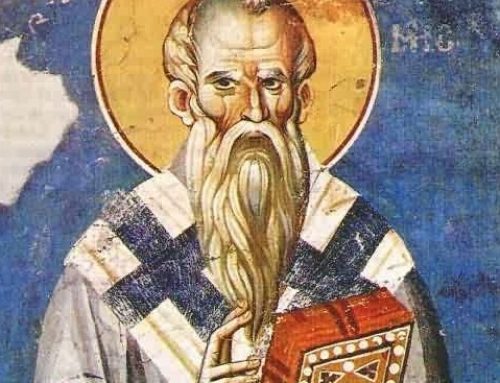
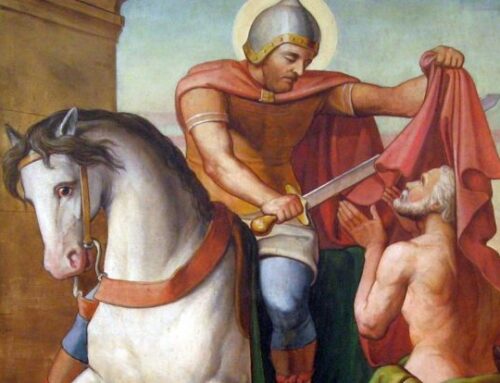
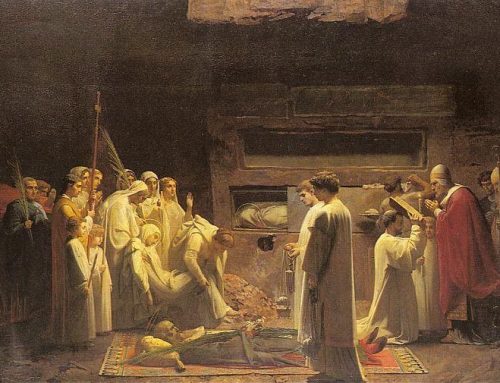
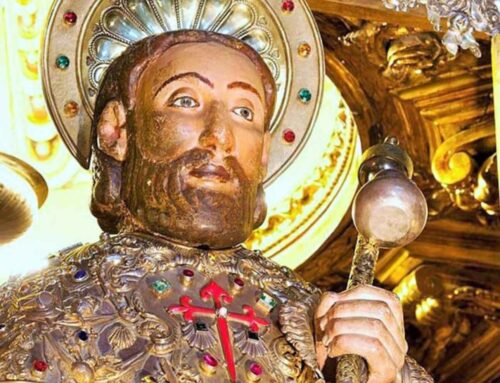
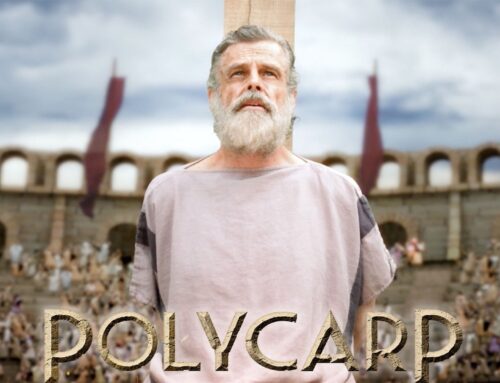
Leave A Comment
You must be logged in to post a comment.